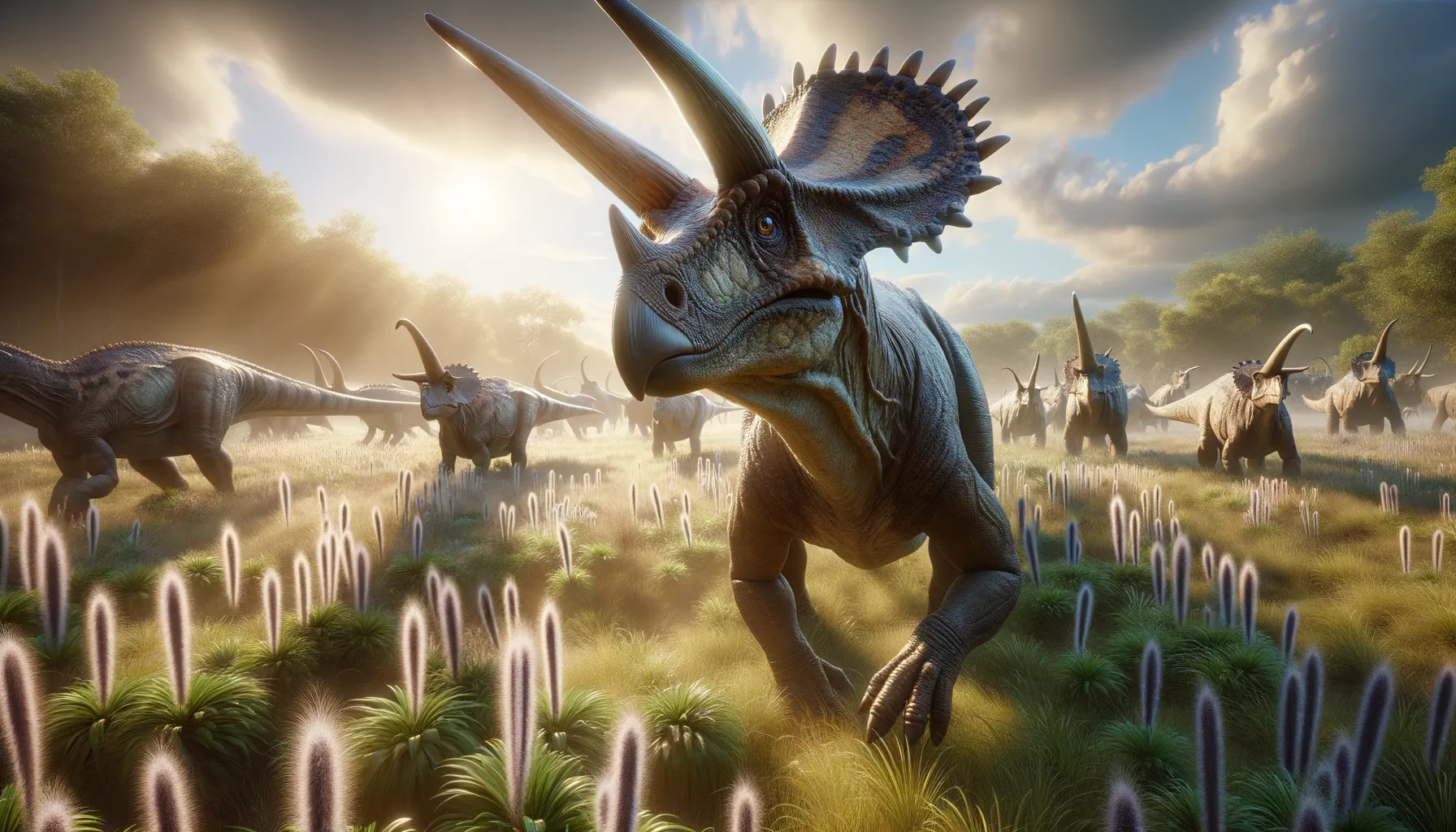
Albertaceratops
A horned giant of the late Cretaceous.
Period
Cretaceous
Length
About 20 feet long.
Height
Approximately 6 feet at the shoulders.
Weight
Around 1.5 tons.
Albertaceratops was a horned dinosaur characterized by its long brow horns and distinctive frill. Living during the late Cretaceous period, it belonged to the ceratopsian group, known for their herbivorous diet and social behavior. It roamed what is now North America in herds, grazing on low-lying vegetation. Its fossil remains have particularly contributed to understanding ceratopsian evolution and distribution.
Diet
Albertaceratops was herbivorous, feeding mainly on ferns, cycads, and conifers. Its beak-like mouth was suited for cropping vegetation close to the ground.
Hunting
As a herbivore, Albertaceratops did not hunt but foraged in groups. Its presence in herds offered protection against predators rather than active hunting behavior.
Environmental challenges
It faced challenges from predators such as theropods, requiring social strategies for defense. Environmental changes, like shifting climate and vegetation, also posed survival challenges. Droughts or temperature fluctuations could affect food availability, prompting migrations or adaptations.
Speed
Relatively slow, typical for a ceratopsian.
Lifespan
Estimated at around 70 to 80 years.
First discovery
Discovered in 2001 in Alberta, Canada.
Fun Facts
- Albertaceratops was a herbivorous dinosaur that lived about 78 million years ago during the Late Cretaceous period.
- This dinosaur is known for its distinct large, forward-curving horns above its eyes, giving it a unique appearance among ceratopsians.
- Albertaceratops fossils were first discovered in Alberta, Canada, which is how it got its name: 'Alberta's horned face'.
- Unlike its famous cousin Triceratops, Albertaceratops had a relatively flat, broad frill instead of a highly ornamented one.
- The discovery of Albertaceratops helped paleontologists fill in gaps about the evolutionary history of horned dinosaurs.
- This dinosaur is believed to have lived in what was a lush, wet environment, possibly near riverbanks where it could feast on low-lying vegetation.
- Albertaceratops is part of a group of dinosaurs known as ceratopsids, which are well known for their beaked faces and elaborate head frills.
Growth and Development
Albertaceratops grew from hatchlings, starting at a modest size. Over the years, it developed its distinctive horns and frill, reaching full size in a decade. Juveniles likely stayed close to adults for safety, learning social structures early on.
Habitat
Its habitat consisted of lush floodplains and river valleys, providing ample vegetation. Seasonal migrations might have occurred in search of food. The environment also included mixed woodlands, creating diverse ecosystems.
Interaction with other species
Albertaceratops coexisted with other ceratopsians and diverse dinosaur species. Competition for resources like food could arise, occasionally causing inter-species conflicts. Mutualistic relationships with certain flora might have existed, aiding seed dispersal.
Natural lifespan
Albertaceratops lived for approximately 70 to 80 years.
Reproduction
Albertaceratops likely laid eggs, with nests found in communal nesting grounds. Parental care might have included defending the nest from predators and assisting hatchlings. Reproduction was seasonal, possibly influenced by climatic conditions.
Social behaviour
This dinosaur exhibited social behavior, living in herds. Group living provided defense against predators and assisted in rearing young. Social hierarchies could have existed, governing group interactions and movements.
Fossil locations
Fossils have primarily been found in Alberta, Canada, offering insights into its existence there. These discoveries have contributed significantly to understanding its anatomy and lifestyle. Additional potential sites across North America remain unexplored.
